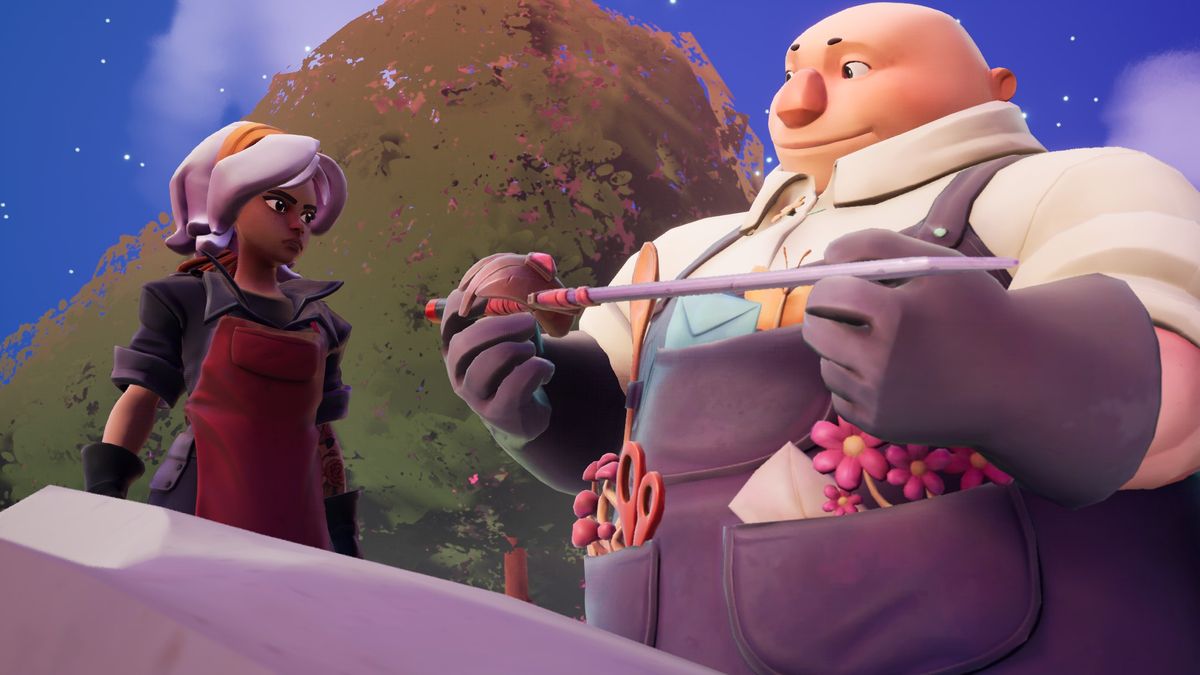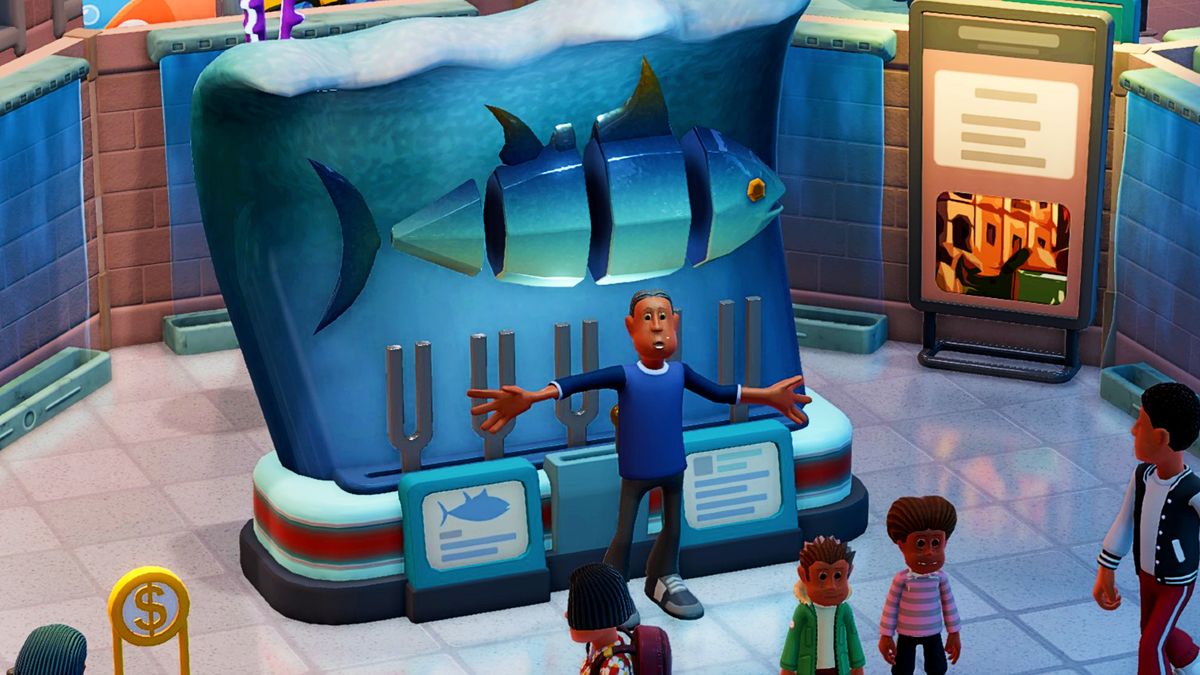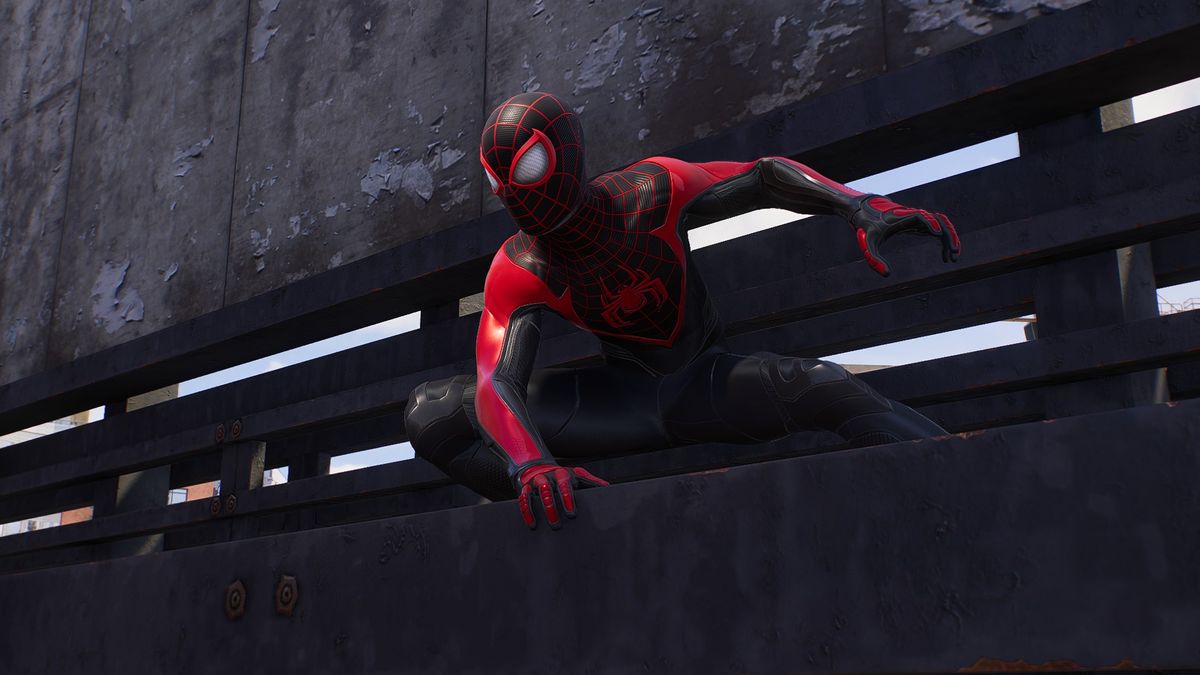Monster Hunter Wilds is each a return to meat-and-potatoes monster fight and a dramatic revision of the searching format. It is a extra approachable lizard-slaying sandbox, and it is a tangle of multiplayer quirks that also appears like one thing out of 2007. It is the cleanest Monster Hunter has ever performed, and it is a temperamental piece of software program which may crash in case you tab again in on the improper time.
NEED TO KNOW
What’s it?: An motion recreation about combating big lizards and turning them into pants.
Anticipate to pay: $70 / £60
Developer: Capcom
Writer: Capcom
Reviewed on: NVIDIA RTX 4070 Tremendous, Intel Core i7 14700KF, 32 GB RAM
Multiplayer: Sure
Hyperlink: Steam
£59.99View at Amazon
Greater than something, Wilds is an motion recreation in a category with out contenders. It is a new top for haymaker hammer blows and the pounding drumbeat of gunlance blasts—for watching your trio of seeker arrows spear a fleeing wyvern out of the sky, sending it plummeting right down to earth as your cheering teammates kick their raptor mounts right into a cost. Wilds indicators a brand new period for Monster Hunter, one which pares down something that stands in the best way of diving into battle with creatures 10 instances your dimension. It is a powerful reinvention, however Monster Hunter’s carved a bit extra of itself away than I would have preferred.
If there is a phrase for Wilds, it is streamlined. Sword combating with tyrannosaurs and stitching their bits into belts is not chopped up between quest-sized chunks. Following a extra easy, cinematic story, Wilds provides technique to a seamless wilderness of rotating seasons and roaming beasts, the place any searching prep will be performed within the second and on the fly. It could actually really feel like a surprise, nevertheless it’s not a surprise with no price. In offering as a lot monster searching as attainable, Wilds has given up a few of Monster Hunter’s allure.
-
I want Monster Hunter Wilds’ open world and altering seasons had been bold sufficient to justify its PC efficiency woes, however they’ve but to really wow me
-
I want Monster Hunter Wilds wasn’t so afraid of letting me play Monster Hunter
However god, it feels good to struggle these lizards. All through my virtually 70 hours with Wilds, I may really feel the 20 years of iteration behind its fight design. Searching, as a rule, is a effectively fed occupation, however the newest spherical of tinkering with Monster Hunter’s 14 weapon sorts is a feast for each type of wyvern-slayer. Subsequent to the flashy new assaults, basic bow and bowgun revisions, and Focus Strike finishers, there is a subtler artistry in design right here that is straightforward to miss. Small, thought of tweaks—like new home windows for adjusting your footing on the tail finish of assault animations—make Wilds the smoothest Monster Hunter combating has ever felt with out sacrificing its meaty texture.
Instruments of the commerce
Every weapon feels prefer it’s been by its personal shonen coaching arc. My beloved hammer has by no means been extra of a cell wrecking ball. It has been blessed with Mighty Cost, a heavy cost assault that gives each a brutal ending blow for capping off combos and a clean pivot level for sliding into my subsequent sequence of hits. Just a few of its golf swings have additionally been made into Offset Assaults, a brand new mechanic that provides heavier weapons a type of pseudo-parry. The timing is hard, however the thunderclap of knocking apart a behemoth Doshaguma’s lunge is definitely worth the effort.
The regular ramp up of the change axe has reached a brand new depth, the place morphing into sword mode presents blistering new whirling assaults that carve trails of explosive vitality the place they join. After I enterprise out with the bow, I’ve obtained a collection of tracer arrows and homing pictures that may needle even probably the most nimble monster.
Simply seeing one other participant’s weapon in motion is sufficient to check my loyalties: One take a look at a Twin Blades person twirling across the discipline like a blood-crazed Beyblade had me making some abrupt modifications to my gear crafting plans.
Feeding into all these weapon updates is the brand new Focus Mode and wound system. Even melee weapons now have entry to a reticle for guiding their hits residence. Concentrating on and destroying wounds with Focus Strikes is a satisfying new layer for moment-to-moment searching. Opening a glowing crimson weak spot supplies some clear route if you do not know the place a monster’s most susceptible, and the hefty chunk of assured harm provides me a motive to interrupt up my bread-and-butter assault combos.
It is a refreshing return to boots-on-the-ground monster searching.
Frankly, destroying wounds is so efficient that it would not shock me if it is fated for a nerf. Between hammer KOs, wound destruction staggers, and an occasional paralysis from my Palico’s weapon, most of the monsters I’ve fought have not been left with a lot room to breathe.
Even when Wilds fight makes hunters barely too succesful, it is a refreshing return to boots-on-the-ground monster searching. World’s enlargement Iceborne and the final Monster Hunter, Rise, each launched new mechanics that felt like disruptions. Touchdown a Focus Strike is a extra seamless complement to the moment-to-moment dodging, attacking, and countering.
Plus it appears and feels sick. That helps.
However what good are weapons with out monsters to struggle? Having spent extra of my adolescence than I would prefer to admit sketching dragons in my center faculty notebooks, I take into account myself one thing of a connoisseur of fantasy lizards. For my cash Capcom sits firmly on the pinnacle of creating inconceivable creatures look, sound, and transfer believably, and Wilds brings some spectacular additions to the Monster Hunter bestiary.
Wild world
Rey Dau is an early spotlight: a barbed, bristling apex predator that carves molten arcs within the desert sand with its lightning-charged wing blades. Preventing Arkveld, Wilds’ flagship monster, is like dueling an avalanche; it is an onslaught of lashing chains and eruptions of blood-red vitality.
In comparison with the extra sedate monster designs in World, Wilds sees Capcom return to being delightfully bizarre. A pair hours into the sport, I am combating within the oil-drenched ruins of some large derelict engine in opposition to a monster that is one third mosquito, one third velociraptor, and one third thrombosed hemorrhoid. There is a big pink fart ape, a returning Monster Hunter basic. There’s the Hirabami: flying, pack-based wormsharks with tails filled with scythe blades.
Picture 1 of 4
They don’t seem to be simply enjoyable to have a look at. They’re enjoyable to study. After I give a Doshaguma further house after it slams the bottom as a result of I do know it is simply the beginning of a worse assault, Capcom’s quietly tricked me right into a sort of automated roleplay. Like my hunter, I am not simply combating monsters—I am finding out them. It is that previous Monster Hunter magic: Simply by familiarizing myself with the sport, I am deepening the fantasy.
Wilds is a leaner, streamlined Monster Hunter regardless of its pitch of broad open environments, and nowhere is that extra clear than in Low Rank, the opening problem tier that includes the sport’s core story. It forgoes the standard Monster Hunter development of climbing Hunter Ranks between precedence quests. As a substitute, the primary dozen hours of Wilds is a good, cutscene-driven searching tour of the Forbidden Lands, following the Hunter’s Guild because it reenters a area that is been closed off for a thousand years. It is a sensible change of tempo for settling into the rhythm of monster searching, steadily doling out the fundamental methods of crafting, cooking, and gathering by an escalating sequence of story hunts.
Simply by familiarizing myself with the sport, I am deepening the fantasy.
Monster Hunter’s sudden cinematic flip is not a story masterpiece, however the spectacular motion choreography in story cutscenes leaves no scarcity of spectacle. I could not assist however cock an eyebrow at how Wilds imagines the indigenous peoples of the Forbidden Lands, although: It means that they’ve by no means invented weaponry, regardless of dwelling subsequent to large carnivorous sandworms for generations. And their eagerness to supply up their sources to the Hunter’s Guild feels a bit of fraught, even when Capcom tries to make it clear that the Guild is completely not doing colonialism.
That mentioned, there’s so much I like in regards to the writing. Not like earlier Monster Hunters, the Wilds protagonist is a fully-voiced character, and a veteran hunter already within the prime of their profession when the sport begins. They’re accustomed to monster ecology and Guild process, that means that of their cutscenes and conversations Capcom can present how the Guild operates and positions itself on the planet. Beforehand the Hunter’s Guild was an excuse for foolish puns, charming goofballs, and exploring the curious psychosexual hangups of your pleasant Guildmarm. In Wilds, it is a corporation with an ethos that extends past turning dragons into gloves (although actually, I would welcome just a few extra of the goofballs again).

I used to be significantly keen on seeing the dynamic between the participant hunter and Alma, their guild handler. Regardless of how lethally competent the hunter is, they refuse to interact a monster with out Alma explicitly issuing Guild authorization, generally at the same time as they’re in direct peril. It is an attention-grabbing glimpse of the Guild’s tradition and philosophy of restraint: A monster situation would possibly require the appliance of violence, however that is not a name for the man with a gunlance manufactured from reconstituted dinosaurs to make unilaterally.
Seasonal have an effect on
What baffled me about Low Rank, although, is the way it handles the brand new season system. In Wilds, every area cycles by three seasons that affect monster spawns, endemic life, and useful resource availability: a Fallow season the place the surroundings is depleted and hungry predators roam in higher numbers, an Inclemency interval the place large storms sweep the panorama, and a season of Loads the place the ecology is renewed and revitalized.
The seasonal cycle produces some beautiful scenes. When Inclemency hits the Windward Plains, the onset of a raging, sky-blackening lightning storm makes any desert battle with a Doshaguma really feel climactic. When the Scarlet Forest blooms into Loads, it turns into a lush, vibrant eden—if eden had a wholesome inhabitants of violent megafauna.
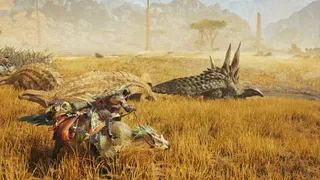
Drawback is, you see little or no of these seasonal shifts throughout Low Rank, as a result of they’re initially tied to story development. You spend most of your story hunts in every area’s Fallow season, solely getting a style of Loads earlier than being bounced to the subsequent locale. Consequently, most of my first dozen hours with Wilds had been spent seeing its environments at their dingiest, delaying any likelihood to roam and really feel out how the seasons meaningfully change every space and every hunt. It is a disgrace, particularly when the element in Wilds’ monster designs actually pops in vibrant Loads lighting situations.
Ending a quest with out being booted again to the hub feels a bit like witchcraft.
When you roll credit and hit Excessive Rank, nonetheless, Wilds turns into a freeform searching playground. Excessive Rank pairs the standard Hunter Rank development with seamless hunt transitions, deployable pop-up camps, and a cell guild handler—all designed to take away as many limitations as attainable between me and my subsequent goal monster. Beginning a hunt will be so simple as strolling out of camp and touchdown just a few hits on the closest beast. If I need to roll proper into one other hunt after bagging that Balahara, or if I would slightly do some mild exploring and scoop up some lizards in my seize web alongside the best way, I can keep out within the wilderness indefinitely.
If I must high up my merchandise pouch, I can pop over to wherever I’ve arrange my nearest pop-up camp. If my meal bonuses run out, my moveable grill means I can cook dinner up a contemporary spherical of stat boosts subsequent to an oasis or on a craggy cliff edge. As somebody approaching my tenth 12 months of enjoying Monster Hunter, ending a quest with out being booted again to the hub feels a bit like witchcraft.
These seamless searching methods make the Forbidden Lands a competition of back-to-back monster battles, and I have been very happy to indulge—however on the similar time, it is that streamlining the place I fear Monster Hunter is at risk of sanding down an excessive amount of of its personal identification. Take the Seikret, for instance. I really like my raptor horse and the beautiful inexperienced plumage I gave it. The mid-hunt weapon switching it lets me do—once more, witchcraft—is nice after I need to sever a tail that my hammer cannot reduce. However the Seikret underlines how a lot of the particular searching has fallen out of Monster Hunter.
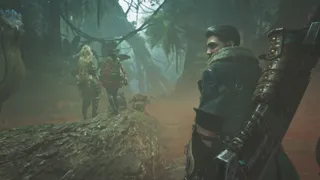
There is no must discover a monster anymore. As quickly as I hop within the saddle, my Seikret will begin ferrying me to my quest goal, even when I have never seen it. With fast entry to excessive pace raptor autopilot, Wilds’ new biomes—Monster Hunter’s most open areas but—really feel smaller than the Worlds maps I traversed on foot. One of many joys of Monster Hunter is creating an intimate familiarity with its environments, and that is a familiarity that is arduous to construct for the stretches of the Windward Plains I’ve solely crossed on Seikret-back.
Misplaced tracks
My opinion would possibly change after I’m on my sixth hunt for Rey Dau components in a row, however I am unable to deny that I discover myself craving for the times of combing the Historical Forest for Anjanath tracks. Likewise, every area’s base camps do not feel like residence in the best way that the hub villages and gathering halls of years previous may. And irrespective of how good the gooey cheese tech is throughout villager feast cutscenes, it will probably’t make up for the Meowscular Chef-shaped gap in my coronary heart after I’m in any other case left to grill my very own meals.
My searching tastes would possibly’ve been outlined by an earlier period, however that will not maintain me from appreciating Wilds’ multiplayer enhancements. Taking part in with your folks nonetheless has a clunkiness to it, however with the ability to kind “hyperlink events” that simplify hopping into one another’s hunts, no matter what lobbies you are in, is a welcome replace.
Sadly, although Wilds made it simpler to hitch up with associates, my searching social gathering periods have been interrupted by repeated crashes. I am fortunate to be enjoying on a latest PC construct that is comfortably throughout the beneficial specs, and by way of body charge, the sport runs nice on my rig. However that hasn’t prevented it from crashing throughout loading screens with irritating regularity. I am not the one member of the PC Gamer workforce to take care of crashes, although I’ve had the worst luck with them. Till a patch arrives, I am seemingly vulnerable to smash slicing to desktop at any time when I attempt to be a part of a good friend’s hunt.
Monster Hunter Wilds appears like a turning level. Updates like Focus Strikes add promising new dimensions to a magnificently indulgent fight design, and its seamless hunts and shifting seasons push the collection nearer to realizing a dwelling ecology for its monsters. With out extra room for Monster Hunter’s historical past, nonetheless, it is a wilderness that is lacking a few of its soul.
Monster Hunter Wilds: Value Comparability £69.83ViewWe examine over 250 million merchandise on daily basis for one of the best pricespowered by
The Verdict
85
Learn our assessment coverage
Monster Hunter Wilds
Finest at school monster fight makes up for a wilderness that is a contact too streamlined.
TOPICS
Lincoln Carpenter
Information Author
Lincoln has been writing about video games for 11 years—except you embody the essays about procedural storytelling in Dwarf Fortress he satisfied his faculty professors to simply accept. Leveraging the brainworms from a youth spent in World of Warcraft to jot down for websites like Waypoint, Polygon, and Fanbyte, Lincoln spent three years freelancing for PC Gamer earlier than becoming a member of on as a full-time Information Author in 2024, bringing an experience in Caves of Qud chicken diplomacy, getting sons killed in Crusader Kings, and hitting dinosaurs with hammers in Monster Hunter.


